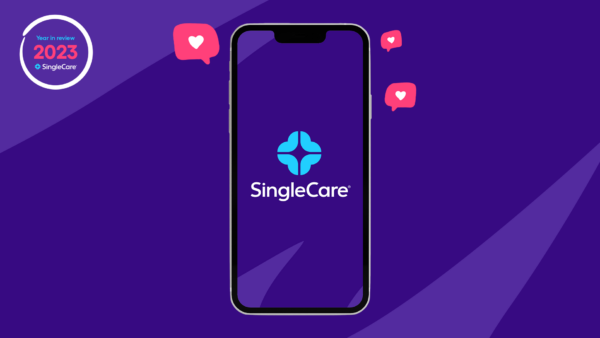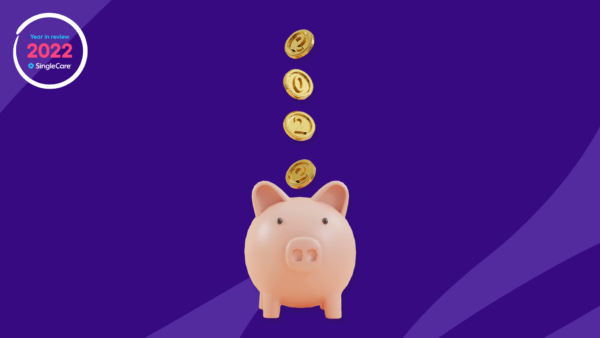Tampon isn’t a dirty word, but a lot of girls grow up being told that it is. In fact, American culture stigmatizes many parts of female health, including premenstrual syndrome (PMS). It’s a real condition that can affect a woman’s health, emotions, and behavior that’s often brushed off as “crazy”—so much so that I actually thought it stood for “period mood swings” for a good part of my life. When I developed a variant known as premenstrual dysphoric disorder (PMDD), I felt like I was what society expected of me: hysterical.
I showed signs of PMDD by age 14. Days before each cycle, I felt a strong sense of suicidal depression, a feeling that would dissipate by the time I started menstruating. I also experienced urgent fatigue and epic anxiety—but it was mostly the steadfast depression that returned at the same time every month, never failing to take me by surprise. If it hadn’t been for my mother’s meticulous note taking and the privilege of access to a physician who listened to me, I may have never been diagnosed.
According to the International Association for Premenstrual Disorders (IAPMD), an estimated 5% to 10% of women are living with PMDD.
PMDD symptoms
“Typically, PMS refers more to physical symptoms while PMDD refers to psychological symptoms,” explains Sara Lingow, Pharm.D., an assistant professor in the department of pharmacy practice at St. Louis College of Pharmacy. She adds that PMS and PMDD symptoms can range from mild to severe.
In order to get a PMDD diagnosis, you need at least five of the listed symptoms as determined by the American Psychiatric Association, according to the Office of Women’s Health during the final week before the onset of menses:
- Anger and irritability
- Depression and suicidal ideation
- Anxiety, tension and panic attacks
- Mood swings and frequent crying
- Lack of interest of typical routines
- Difficulty concentrating
- Fatigue and exhaustion
- Binge eating and food cravings
- Insomnia
Dr. Lingow clarifies that the symptoms aren’t depression, but a “markedly depressed mood.” They don’t just include anxiety, but “marked anxiety.” These symptoms are severe enough to disrupt an otherwise neurotypical day-to-day or cause the individual significant distress.
When my cycle is good to me, I only have five of these symptoms. Sometimes, it’s all of them. But with more than a decade of experience maneuvering my hormonal undulations, I’ve learned to communicate my symptoms to those closest to me, if only to ask for space or support.
RELATED: The link between physical and mental health
Diagnosing PMDD
For PMDD, diagnosis is a tool for legitimacy, a reminder it’s not all in your head. If you think you have PMDD, the first step is tracking symptoms and mood changes on a calendar or in a menstrual app. With this information, you can ask yourself: When are my symptoms present, and do they line up with the luteal phase (post-ovulation and pre-menstruation) of my menstrual cycle? Do they return around the same time each month? Bringing this information to a primary care provider or gynecologist will help you receive the care you need—through pharmaceuticals, lifestyle changes, and a sense of validation.
PMDD can also co-exist with other mental health issues such as clinical depression and generalized anxiety disorder, making treatment and diagnosis—or simply understanding one’s own mental health issues—that much tricker. According to Dr. Lingow, “The timing of psychological symptoms would be key in differentiating PMDD and depression.”
As someone with multiple mental health diagnoses, keeping a mental health calendar has helped me discern my experiences, especially considering the cyclical nature of PMDD.
What causes PMDD?
PMDD occurs during the luteal phase, says Kate Placzek, Ph.D., a senior research scientist with ZRT Laboratory, performing laboratory research on hormones.
Her research shows that people living with PMDD are very sensitive to the rise in the progesterone hormone that occurs during the luteal phase. Even though progesterone is widely known as a calming hormone, those with PMDD tend to have an adverse reaction—one that invites depression, anxiety, and other stressful symptoms.
How do medical experts treat PMDD?
The first line of defense is lifestyle changes like increased fiber and exercise; however, Dr. Lingow says hormonal contraceptives and SSRI antidepressants are two common pharmaceutical PMDD treatments.
According to Alison McAllister, ND, a clinician at ZRT Laboratory, not all contraceptives are created equal.
“Women with PMDD may benefit from contraceptives that are monophasic, or the same all month long,” says McAllister, specifying Yaz, Yasmin, and Mirena in particular. She also notes that women can use certain oral contraceptives continuously and skip the placebo pill to decrease the number of times their hormones shift per year. Recently, combined hormonal contraceptive pills with drospirenone and ethinyl estradiol received specific FDA approval to treat PMDD.
I’ve been on a low-hormone birth control regimen on and off since I was diagnosed with PMDD. It doesn’t eliminate my symptoms entirely, but it does quell them to keep me from suicidal ideation (IAMPD says that 30% of people with PMDD will attempt suicide in their lifetime).
What’s worth noting, though, is that all people react differently to medication, so what works for one person may not work for another. It is important to work closely with your provider to find the most effective treatment regimen.
RELATED: Birth control options
PMDD is not just in your head
Regardless of the treatment route you choose, don’t doubt your symptoms. Even though PMDD wasn’t added to the Diagnostic and Statistical Manual of Mental Disorders V until 2013, research is beginning to come around the bend.
“So many times throughout history, women were told they were hysterical,” says Dr. Placzek. “But there is a biochemical reason for why they’re feeling the way they’re feeling.”
I’m sure my 14-year-old self would have appreciated that validation as well as other women’s PMDD stories, but I’m just as comforted to hear it more than a decade later.











